
In 2024, How to Transfer Everything from Apple iPhone 14 to iPhone | Dr.fone

How to Transfer Everything from Apple iPhone 14 to iPhone 8/X/11
This article guide focuses on the techniques and tools you need to transfer everything from Apple iPhone 14 to iPhone 8/X/11. As we know that most of the iPhone users will be switching their devices because of the new and improved iPhone 8/X/11 device which has to offer more features to the Apple users however, there is always a need for proper tool that can transfer data from the old iPhone device to new iPhone 8/X/11.
We have different kinds of files in our iPhone and almost all of the files are important to us. We would never want to stay out of touch with our important ones, and contacts help us to do that. All of that collection of your favorite music is not east to gather and you would certainly not like it if all of it is gone from your handset, So Contacts, Photos, SMS, Music all of these files are very important to us one can only understand the importance when they have no more access to these contents. Similarly, Photos are also important because they are the proof of our precious memories, and we don’t want to lose them. SMS messages are the records of every conversation we had with our contacts and sometimes we need record to continue the conversation regarding the subject. To transfer all of the content from one phone to another, we need a transfer tool because different handsets have different operating systems. And it is not easy to perform transfer functions between two devices. Most of the people hesitate to switch to a newer device because of the hassle they think they might have to go through to transfer data to new device, including the new iPhone 8/X/11.
How to transfer everything from Apple iPhone 14 to iPhone 8/X/11
If you are looking to transfer everything from your old iPhone to your new iPhone 8/X/11 then Dr.Fone - Phone Transfer is a must get tool. With Dr.Fone application, you can easily transfer your important music, pictures, videos, SMS and much more transfer data to your new iPhone 8/X/11. There are always complications for iPhone users when they want to switch to new and latest device, but it is very easy thanks to Wondershare’s Mobile Trans.
Dr.Fone - Phone Transfer
Transfer Everything from Apple iPhone 14 to iPhone 8/X/11 in 1 Click!.
- Easily transfer photos, videos, calendar, contacts, messages and music from old iPhone to new iPhone 8/X/11.
- Enable to transfer from HTC, Samsung, Nokia, Motorola and more to iPhone 11/X/8/7S/7/6S/6 (Plus)/5s/5c/5/4S/4/3GS.
- Works perfectly with Apple, Samsung, HTC, LG, Sony, Google, HUAWEI, Motorola, ZTE, Nokia and more smartphones and tablets.
- Fully compatible with major providers like AT&T, Verizon, Sprint and T-Mobile.
- Supports iPhone, iPad, iPod touch and the latest iOS version.
- Fully compatible with the latest Windows or Mac version.
3981454 people have downloaded it
This section of the article focuses on the steps through which you can transfer your data from your Apple iPhone 14 to your new iPhone 8/X/11.
Step 1: The first and foremost step includes connecting your devices to your PC. When you are done simply launch the Dr.Fone software click Phone Transfer in the main menu.

Step 2: Right after your devices have been connected simply note the source and destination phone are connected at this moment, you will get a proper tab with source and destination phone images and their connection status.
Step 3: When you are done with selecting the source which in this case would be iPhone 7/7Plus and destination device which in this case would be iPhone 8/X/11 click Start Transfer, you need to specify the data you want to transfer in this case you would select all contents since you want to transfer everything.
Step 4: Simply click start transfer and the transfer process will begin make sure that both of the Apple iPhone 14 devices remain connected throughout the transfer process.
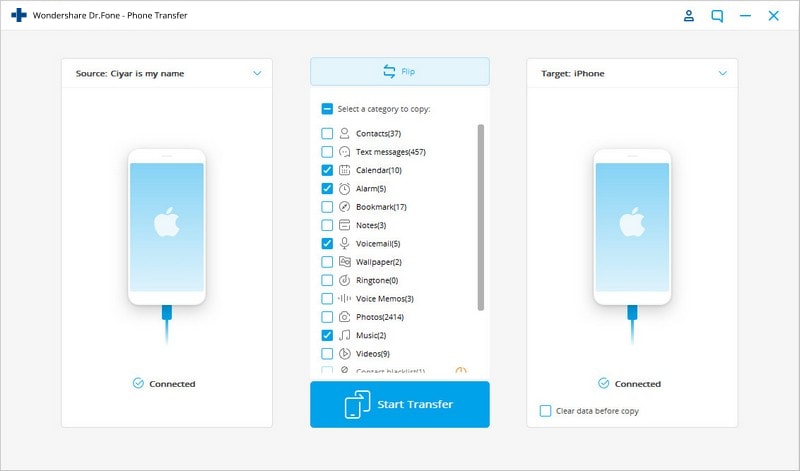
Part 2: How to transfer everything from Apple iPhone 14 to iPhone 8/X/11 with iCloud
Initially signing up for ICloud gets you 5GB of storage, you can use this storage for IOS device backup, iCloud photo library, app data and documents stored in the ICloud. If you feel 5gb storage is not enough you, you can always upgrade your storage but then you will have to pay. iCloud as a backup is a great if anything happens to your phone you can get access to your data anywhere with the internet besides this you can also use this data to switch your new iPhone 8/X/11 device.
Step 1. From your IPhone 7 device connect to a Wi-Fi network. Go to IPhone 7 settings and tap on your name. Scroll down and select the iCloud option.
Step 2. After you have clicked the iCloud option in the backup section enable iCloud backup option. And hit “Backup Now”.
Step 3. You must be connected to the Wi-Fi until the backup process is completed. In ICloud tab select storage to see the details of your backup.
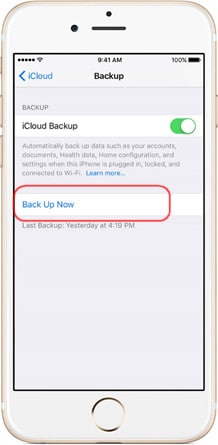
Step 4. Now that your data has been backed up using your iCloud id you can always add this id to your new iPhone 8/X/11 device. Right after you add your iCloud id to your new iPhone 8/X/11, and Restore from iCloud Backup, all of the backed up data from Apple iPhone 14 will be transferred to your new iPhone 8/X/11 device.
Part 3: How to transfer everything from Apple iPhone 14 to iPhone 8/X/11 with iTunes?
You can create a local backup for your Apple iPhone 14 device on your PC through iTunes, and then restore to your new iPhone 8/X/11. So that you sync all data from Apple iPhone 14 to iPhone 8/X/11 with iTunes. If you don’t have iTunes you can download for free from apple’s official website.
Step 1. After you have successfully installed iTunes on your Computer connect the Apple iPhone 14 device to your system and launch the iTunes Application.
Step 2. iTunes will detect your device, simply click summary of your phone, in the Backups tab you must click “Backup Up Now” under the Manually Backup and Restore.
Step 3. The iTunes will back up your iPhone. After the process is complete you can disconnect your Apple iPhone 14.
Step 4. After you have backed up the data from your old Apple iPhone 14 device, simply connect your new iPhone 8/X/11 and restore the data to your new iPhone 8/X/11 device through iTunes.
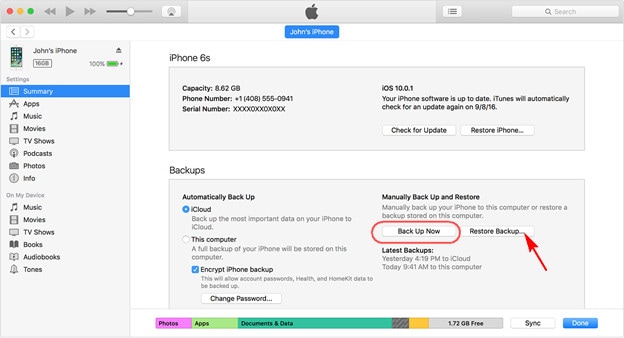
With the advancements in the mobile technology we are presented with the new and improved features every year, there is always a point where we need to change our device because we do need those new features. So in one of the cases iPhone users would want to change their device because of the extensive features iPhone 8/X/11 has to offer. So in this case we would want to transfer the data from our Apple iPhone 14 to iPhone 8/X/11. Apple users and techie’s are always up for new handset and they love to get their hands on the newer Apple’s device. This is where there is a need for an effective tool to transfer the data from the old Apple iPhone 14 to iPhone 8/X/11.
After going through this article guide we can conclude that iPhone users can transfer their data to their latest iPhone 8/X/11 with the help of iTunes, iCloud and Dr.Fone - Phone Transfer (iOS & Android). However, Dr.Fone is very effective for data transfer operations. Plus, the iPhone to iPhone Transfer tool is very easy to use because of its user friendly interface design.
Should I Switch From iPhone To Google Pixel?
The battle between smartphone giants has been a consistent source of intrigue for consumers. Through every new launch, tech giants such as Apple and Google introduce impressive functions. These allure users with the prospect of improved efficiency and seamless usability. This prompts the fundamental query of whether one should consider switching from an iPhone to a Pixel.
Amid the ongoing discourse about these two devices, it becomes imperative to go through the advantages and disadvantages inherent to each. This serves to equip you with the necessary insights for making a choice that aligns with your preferences. In this guide, we will explore the key considerations to contemplate when switching from an iPhone to a Google Pixel.
Part 1: What Is The Google Pixel?
An Android smartphone launched by Google in 2016, Google Pixel was designed to replace the Nexus. Similar to Nexus, the Pixel operates a “stock version” of Android, which means that it gets updates as soon as they’re released. Other Android smartphones sometimes delay updates for weeks or even months. The Google Pixel comes with free unlimited photo storage on Google Photos. Additionally, Google Photos for the Pixel doesn’t compromise the photo quality in order to save room. Well, there is much more to explore about Google Pixel.
Key Specifications-
- OS- Android 7.1 and upgradable to Android 10.
- Internal Memory - 32GB 4GB RAM, 128GB 4GB RAM
- Main Camera - 12.3 MP & Selfie Camera - 8 MP.
- Premium design with fingerprint sensors
- Headphone Jack & USB Type -C
- Larger and crisper display
Let’s first have a quick look at all versions of it:
- Google Pixel & Google Pixel XL- Launched in 2016, these come with a circular icon theme and offer free unlimited full-quality photo storage.
- **Google Pixel 2 & Google Pixel 2XL -**The 2nd generation Google Pixel was launched in 2017. The XL version contains very slim bezels, like iPhone X smartphones. It even facilitates a far better camera in comparison to its competitors.
- Google Pixel 3 & Google Pixel 3 XL - Launched in 2018, Google Pixel 3 followed the trends of the first two phones. Enhancements to the display, screen, and camera were made and other improvements as well. The Pixel 3 XL even has entails a top-notch, like the iPhone X. However, you have the choice to remove the notch by disabling the display at the top. It also comes with a wireless charging feature.
- Google Pixel 3a & Google Pixel 3a XL - They are less expensive versions of the 3 and 3 XL. The notable difference is that 3a entails a single selfie camera, whereas 3 has a dual selfie camera.
- Google Pixel 4 & Google Pixel 4 XL - Launched in 2019, the fourth generation drastically enhanced face unlock. A 3rd rear-facing camera was introduced to the Apple iPhone 14 device. On the phone’s front, the notch was substituted by a standard top bezel.
- Google Pixel 4a & Pixel 4a 5G - Released in 2020, the Pixel 4a was a more affordable variant that retained many features from its predecessor. It offered a compact design, a single impressive rear camera, and the latest Android software. The Pixel 4a 5G shared similarities with the Pixel 4a but introduced 5G connectivity and a larger display.
- Google Pixel 5 & Pixel 5a 5G - The Pixel 5, released in 2020, focused on a balance of performance and price. It featured a mid-range Snapdragon processor, 5G capability, and an improved camera system. The Pixel 5a 5G, introduced in 2021, continued the legacy of affordable yet capable Pixel devices, enhancing the camera and offering 5G connectivity.
- Google Pixel 6, Pixel 6 Pro & Pixel 6a - Launched in 2021, the Pixel 6 series marked a significant departure in design and hardware for Google. The devices featured Google’s custom Tensor chip, aiming for enhanced AI capabilities. The Pixel 6 Pro boasted a larger, higher-resolution display and additional camera features than the standard Pixel 6 model. Both phones focused on camera advancements, software enhancements, and unique design aesthetics. The Pixel 6a continued to be the affordable version of the Google Pixel 6 series.
- Google Pixel 7, Pixel 7 Pro & Pixel 7a - Arrived in 2022, the Google Pixel 7 series came equipped with Google’s 5nm Tensor G2 chip and powerful 50MP camera. It also boasts 8 GB of RAM and a long-lasting battery. The Pixel 7 Pro is the higher-end product of the series. It has additional camera enhancements and more RAM or storage options. The Pixel 7a is a more affordable variant with some compromises in hardware specifications compared to the higher-end models.
- Google Pixel 8 & Pixel 8 Pro - Running on a Powerful 4nm Google Tensor G3 chip, Google Pixel 8 and Pixel 8 Pro are the latest devices in the Pixel series. The RAM has increased in these devices, with the Pixel 8 boasting 8 GB RAM and 12 GB for Pixel 8 Pro.
Considering key specifications and features, it is definitely worth switching from Apple iPhone 14 to Pixel, especially if it has been a long time since you’ve been using an Apple device.
Part 2: Notice That You Should Know Before Switching from iPhone To Google Pixel
Before you switch iPhone to Pixel 2, there are certain things to consider or you need to do, so let’s have a look at them-
1- Disable iMessage
When messaging other iPhones from your iDevice, they’ll communicate through iMessage when you connect to the internet. That’s different from usual SMS texting. And if you leave iMessage switched on your iPhone, many of your messages will be routed via that service. If you’re on a new Google Pixel smartphone, you won’t get any of those texts. Thus, you need to turn off iMessage before you make that switch. While you’re here, disable FaceTime.

2- You Might Need to Buy Your Apps Again
Have you pay-front apps on your iDevice that you paid for? If so, then you’ll probably need to purchase them again from the Google Play Store if you want those apps on your Google Pixel phone as well. The App Store and Google Play Store are entirely different entities and the housed apps are designed for different platforms. Some apps you had on your iDevice may not even be accessible for your Google Pixel device and vice-versa. However, if you’ve subscribed to a service such as Spotify, you just have to get the app and sign in to your new Android device and that’s it.
3- Re-Sync Your Crucial Data
If you have all of your calendar events, contacts, documents, and photos synced with iCloud and all is on your iPhone, you’ll probably need to re-sync all on your Google Pixel device. Android’s cloud version is housed in Google apps such as Gmail, Contacts, Docs, Drive, etc. When you set up your Google Pixel, you’ll create and set up a Google account. From this point, you can sync some of the iCloud content with the Google account, thus you won’t need to re-enter lots of info.
4- Back up Photos to Transfer them from Apple iPhone 14 to Google Pixel with Ease
The easiest way to transfer your pictures from your iPhone to Google Pixel is to use the Google Photos app for iPhone. Log in with your Google account, click the backup and sync option from the menu, and then, get Google Photos on your Google Pixel and log in.
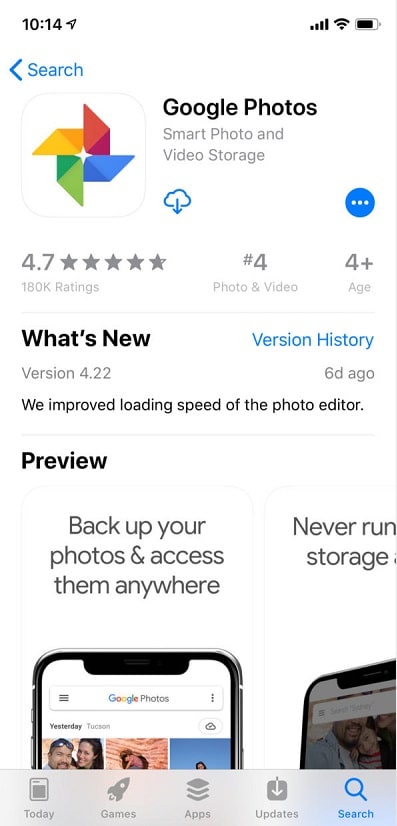
5- Back Up Your iPhone Data to Avoid Data Loss
1. Using iCloud Backup
To begin, link your iPhone to a Wi-Fi network. Then, navigate to the Settings app and tap on your name, followed by selecting “iCloud.” Scroll down within the options and locate “iCloud Backup.” Switch on the “iCloud Backup” option and proceed to tap “Back Up Now” to immediately initiate the backup process. Make sure to verify that the backup is fully completed before moving forward.
![]()
2. Using iTunes on a Computer
Begin by linking your iPhone to a computer using a USB cable. Launch iTunes and pick your device from the list. Navigate to the “Summary” segment and opt for the “Back Up Now” selection. This action will generate a comprehensive backup of all your iPhone data on the computer.
![]()
3. Wondershare Dr.Fone

Wondershare Dr.Fone
One click to back up your iPhone data!
- One-click to back up the whole iOS device to your computer.
- Allow previewing and selectively export from Apple iPhone 14 to your computer.
- No data loss on devices during the restoration.
- Works for all iOS devices. Compatible with the latest iOS version.

3981454 people have downloaded it
The most advanced and reliable phone backup toolkit is Wondershare Dr.Fone because it helps you back up data without worrying about storage space. It also provides the Incremental feature through which your iPhone is backed up without connecting to the computer.
Furthermore, you can preview data stored in your iPhone backup file and restore specific data to your iDevice. It can also restore your iCloud/iTunes backup to your iPhone/Google Pixel without factory resetting the Apple iPhone 14 device.
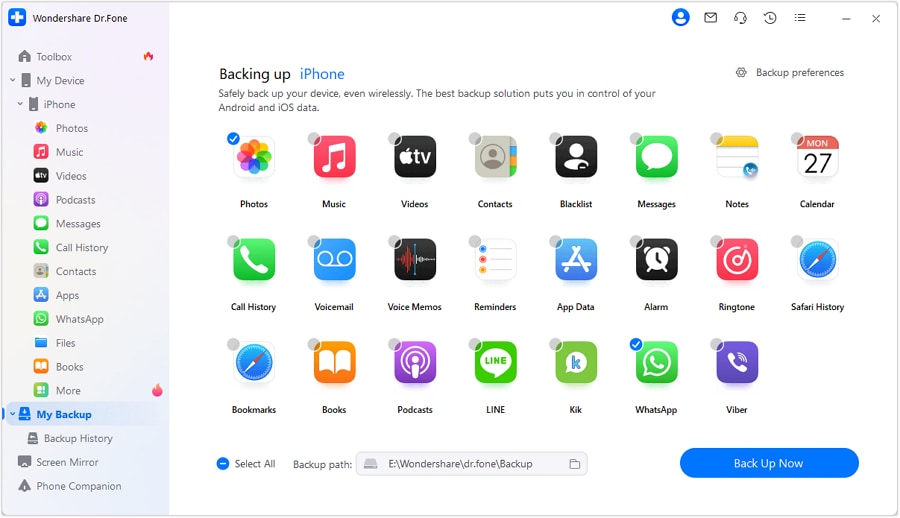
Part 3: How Many Data Can I Email To Google Pixel?
Thinking about transferring data from Apple iPhone 14 to Google Pixel by Email? Well, it is the best option only if you want to transfer small-size files and not much data. And yes, there is a limit to how many or much data can you email to your new Google Pixel device.
The email size limit is 20 MB for some platforms and 25 megabytes for others. For instance, if you want to send a video from your iPhone to your new Google Pixel device, then the video should be less than 15 or 20 seconds long to share via email.
Part 4: One-Stop Solution to Switch Data From iPhone To Google Pixel
If you want a one-stop solution to transfer data from Apple iPhone 14 to Google Pixel, then you need to rely on a powerful phone-to-phone data transfer software like Dr.Fone - Phone Transfer . With its assistance, you can transfer contacts both in a cloud account and phone memory along with videos, photos, text messages, etc from Apple iPhone 14 to Google Pixel in just one click.
To help you learn how to use Dr.Fone - Phone Transfer program for switching iPhone to Google Pixel 3, below is the simple guide-
Step 1: Get the Dr.Fone - Phone Transfer on your computer and then run it. Then, choose the “Phone Transfer” option.

Step 2: After that, connect both of your devices to the computer and let the software detect them. And ensure that iPhone is selected as a source and Google Pixel as the target and select the files you want to transfer.
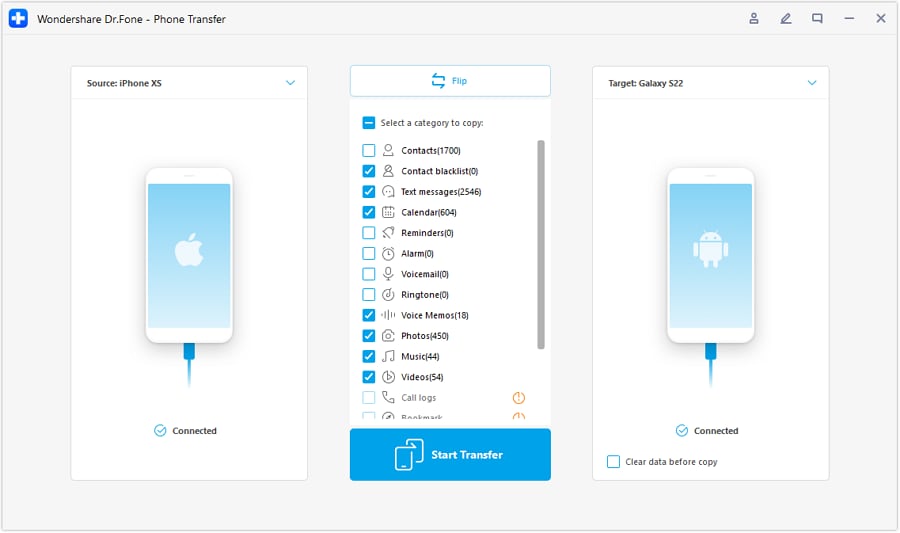
Step 3: Finally, hit the “Start Transfer” button to begin the transfer and that’s it.
And if you ever want to get back to your iPhone, then you would probably wonder how to switch from Pixel to iPhone. In that case, all you need is a phone-to-phone data transfer app like Dr.Fone - Phone Transfer to make the switch successful with all the data you need on your new device.
The Bottom Line
Switching between the iPhone and Google Pixel demands thoughtful deliberation, as evidenced by the ongoing debate. Factors like OS preferences, app compatibility, and data synchronization need to be considered. While the transition process may seem daunting, many tools can simplify the switch. They ensure a smooth experience of switching from Apple iPhone 14 to Google Pixel.
In this context, Wondershare Dr.Fone emerges as a comprehensive and user-friendly solution. It helps you in transferring data from an iPhone to a Google Pixel. With its versatile data transfer capabilities and emphasis on data security, Dr.Fone offers a reliable and efficient data transfer method.
Switch Cards Between Apple iPhone 14 and other iPhones Will Move All Phone Services?
The existence of SIM cards is the fundamental source of all cellular network connections. With their use from the inception of smartphones, SIM cards are associated with every significant cellular operation. All major functions, such as cellular calling, messaging, and cellular internet, are obtained through SIM cards. Whether you are using an iPhone or an Android, using a SIM card is standard.
If you are seeking to change your iPhone, you will have to shift everything, including the SIM cards. For that, the article discusses a guide explaining how to switch SIM cards in Apple iPhone 14 and other iPhones properly. Look through the discussion for better awareness of switching SIM cards between Apple iPhone 14 and other iPhones. The implications of shifting SIM cards and other details will be focused on throughout the discussion.
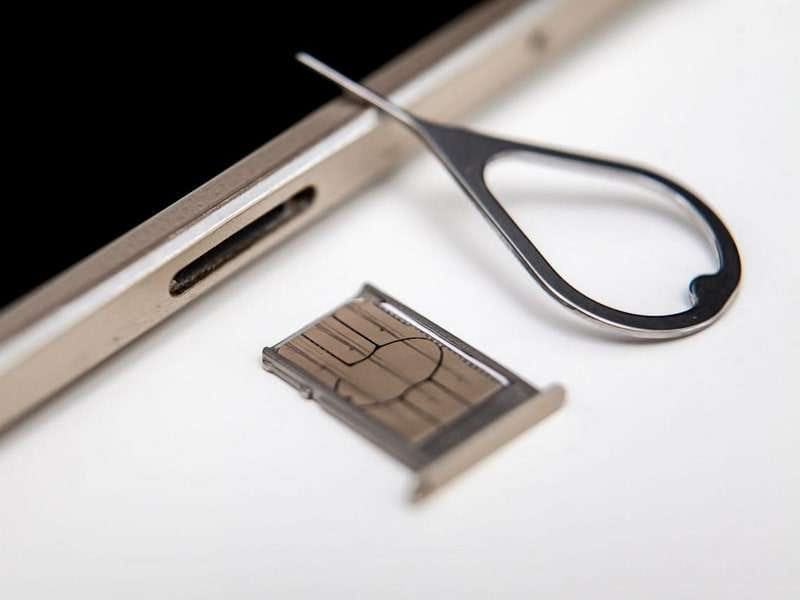
Part 1: Things To Know Before Switching SIM Cards in iPhone
Whenever you consider switching your SIM card to iPhone, you must keep a few things in mind. Considering these points will help you in avoiding all forms of discrepancies that can occur on your iOS device:
- Compatibility of SIM Card: You have to ensure that the SIM card is compatible with your iPhone. Some SIM cards do not operate on Apple iPhone 14 and other iPhones since they are incompatible.
- Unlocked iPhone: If you have an unlocked iPhone, you can utilize third-party SIM cards for this purpose. An unlocked iPhone is a best-case scenario for using such SIMs.
- Backup iPhone Data: Although there is no direct involvement of iPhone data in the process, it is best to back up the data. It includes all essential contacts and media that might get physically damaged while changing SIM cards.
- Turn Off iPhone While Switching SIM Cards: It is best to turn off your iOS device during such processes. To avoid any software anomaly, turning off the Apple iPhone 14 device can save you the drill.
Part 2: What Happens If You Switch Two SIM Cards in iPhone
On switching a SIM card to a new iPhone, there are multiple consequences that occur against it. The provided details explain the possible situations that can arise if you consider switching SIM cards in iPhone:
- SIM cards usually contain contacts from the previous device it is contained in. There is a possibility that the contacts present in the SIM card might be transferred into the new iPhone. On attaching the SIM card to the iPhone, the contacts will be automatically transferred.
- The cellular network, along with other cellular packages, will be in operational use as the SIM card will be attached to the iPhone. You will be paying according to the packages offered by your SIM carrier.
- If the SIM card is not compatible with the iPhone, the network operations will malfunction and not operate properly. Different connectivity issues will be reported across the scale.
- On switching your SIM card, you will have to reactivate iMessage and FaceTime under the cellular settings of the new SIM card. The previous settings for both services will be removed upon removing the SIM card.
Part 3: How To Switch SIM Card to New iPhone Safely
Once you have learned the implications of switching your SIM card to your new iPhone, you will need to understand the operability involved in the process. To know how to switch SIM cards iPhone perfectly, follow the step-by-step process provided below:
Step 1: Turn off your iPhone to remove the current SIM card from your device. For that, lead into the “Settings” and look for the “General” section. Follow through the screen and scroll down to find the option of “Shut Down” to turn off your iOS device.

Step 2: As the Apple iPhone 14 device turns off, use a proper pin to open the SIM tray on your iPhone, which completely depends on your model. For the latest and newest Apple iPhone 14 and other iPhones, the SIM tray is present on the bottom-left side of the Apple iPhone 14 device. Remove the old SIM card and replace it with the new one according to the position. Re-insert the SIM tray back into the Apple iPhone 14 device.

Step 3: Use the “Power” button on your iOS device to turn it on. Once it turns on, you will find the cellular operations working according to the new SIM card.
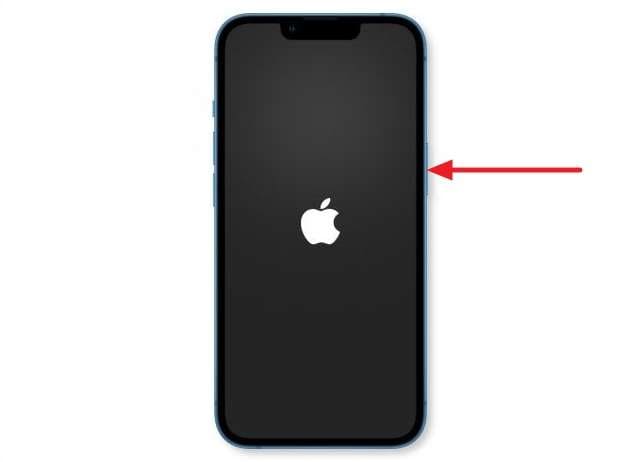
Part 4: What Happens If You Switch to an iPhone Locked to A Specific Carrier?
If you switch to an iPhone locked to a specific carrier, you might encounter several complications. These could prevent the Apple iPhone 14 device from functioning with your desired network provider. In such instances, the iPhone’s functionality could be limited. It hinders your ability to use certain features or services on the Apple iPhone 14 device. This issue is particularly prevalent when trying to use a SIM card from a different carrier than the one the iPhone is locked to.
To address this concern, you can use Dr.Fone - Screen Unlock (iOS) , a cutting-edge solution. It is designed to unlock SIM locks and enable the use of the iPhone with any compatible carrier. Dr.Fone provides a reliable and user-friendly method to unlock various locks. This also includes SIM locks on Apple iPhone 14 and other iPhones, allowing you to switch between carriers.
Dr.Fone - Screen Unlock (iOS)
Best SIM Unlock for iPhone.
- Simple, click-through, process.
- Fix SIM unlock with a few clicks.
- Supports almost all carriers, from Vodafone to Sprint.
- No tech knowledge required, everybody can handle it.
- Supports iPhone 5S to iPhone X, which are running between iOS 12.0 and iOS 14.8.1

3,046,049 people have downloaded it
Steps To Remove iPhone SIM Lock via Dr.Fone - Screen Unlock (iOS)
The following are the steps you need to follow to remove the iPhone SIM lock with the help of Wondershare Dr.Fone:
Step 1: Access Screen Unlock Within Wondershare Dr.Fone
Start installing and launching Wondershare Dr.Fone on your computer and selecting “Toolbox.” From the main interface, click “Screen Unlock” and identify “iOS” as your device. Now, tap “Remove SIM Locked” from the “Screen Unlock” menu and connect your iPhone.

Step 2: Jailbreak Your iDevice
On the following screen, tap “Start” and follow it by clicking “Unlock Now” as Wondershare Dr.Fone recognizes your device. Now, you will need to jailbreak your device, for which the instructions are given on the screen. Remove the SIM card from the phone and access “WLAN” through device Settings.

Step 3: Complete the SIM Lock Removal Process
Go to the Wi-Fi network you are connected to and choose “Forget This Network.” Then, move to each saved Wi-Fi network in “My Networks” and remove all of them. Reinsert the SIM card to the Apple iPhone 14 device and press “Continue” on the screen. It will initiate the SIM lock removal process, which will be finished in a few moments.
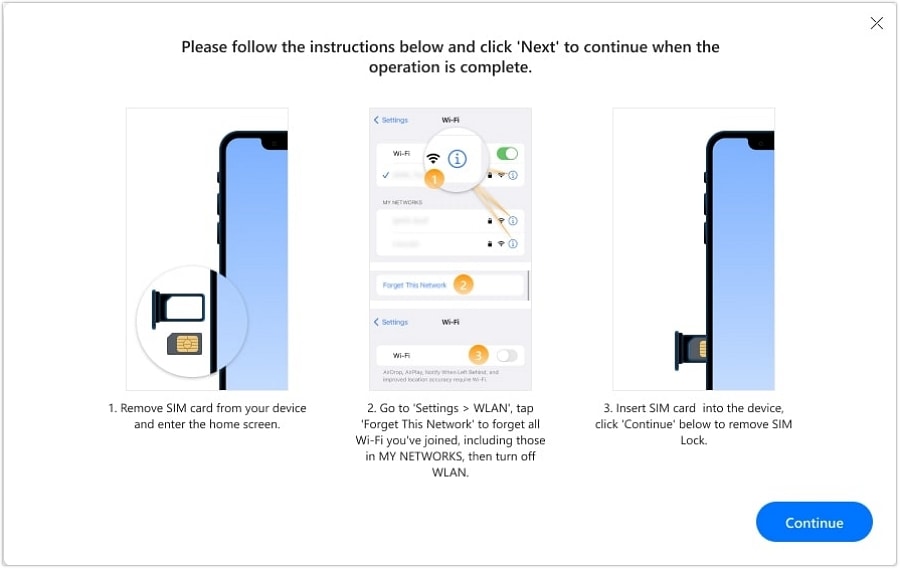
Part 5: How To Switch All Data to New iPhone in One Click
Whenever you consider changing your SIM card on your new iPhone, there are certain things you must look out for. Maintaining all the data is one appropriate consideration that can be effective for your operations. Keeping data backups under such circumstances is the best-case scenario to avoid discrepancies. Although you are switching SIM cards between Apple iPhone 14 and other iPhones, what if you are required to shift data?
If you have bought a new iPhone and need to switch all data along with the SIM card, you will need a proper direction. For this, Dr.Fone - Phone Transfer (iOS) is the savior. This particular platform is known for making operations of data transfer easier. While Dr.Fone replicates multiple features and functions, it offers some extensive characteristics. An overview of these features is presented as follows:
- You can transfer various data between devices, ranging between 8 to 15. It entirely depends on the nature of the transfer between devices.
- The process of transferring data is straightforward. You are not required to put in any effort to transfer data.
- The results provided in the data transfer are incredibly high. Dr.Fone reports concluding proceedings within 3 minutes.
Steps To Switch Data to New iPhone With Dr.Fone - Phone Transfer
As you seek to know the steps to switch data to a new iPhone with Dr.Fone - Phone Transfer, follow the steps as provided next:
Step 1: Open Dr.Fone and Select Phone Transfer
Launch Wondershare Dr.Fone after downloading and installing it on your device. Continue to select “Phone Transfer” from the available options. Following this, connect your old and new Apple iPhone 14 and other iPhones to your device.

Step 2: Set Source and Destination
As you connect both devices in the transfer process, define the source and destination. Set your old device as the “Source” and the new iPhone as the “Target.” To change the Apple iPhone 14 devices, use the “Flip” button.

Step 3: Select File Types and Transfer
Select the file types that you wish to transfer from the center section. Select “Start Transfer” to initiate the process. The data will be successfully transferred in a few minutes.

Frequently Asked Questions
Here are answers to some of the FAQs available on the internet regarding how to change a SIM card on an iPhone.
- Can I use the same eSIM card to switch between different Apple iPhone 14 and other iPhones?
Yes, you can use the same eSIM card to switch between different Apple iPhone 14 and other iPhones, provided that the specific carrier supports eSIM technology and allows the transfer of the eSIM between devices. With eSIMs, the process of switching between devices is typically smoother compared to physical SIM cards. The reason is it involves digital activation and can be done remotely without the need to swap cards physically.
- Is there a difference between switching physical SIM cards and using eSIM for transferring phone services between Apple iPhone 14 and other iPhones?
Physical SIM cards are tangible, removable chips that need to be inserted into a SIM card tray, whereas eSIMs are integrated directly into the Apple iPhone 14 device’s hardware. Swapping physical SIM cards involves physically removing and inserting the card into the new device, whereas transferring an eSIM between devices can be done remotely. Physical SIM cards can store limited contact information and some network settings, whereas eSIMs can store multiple network profiles.
Conclusion
This article has provided a valuable overview of switching SIM cards to new Apple iPhone 14 and other iPhones. With a proper understanding of the repercussions involved in the process, a guide has been discussed. Along with its thorough discussion, you have also figured out how to transfer data to a new iPhone. For that, Dr.Fone - Phone Transfer is the best option in the market.
Also read:
- [New] 6 Completely Different Places to Get YouTube Icons and Logos for 2024
- [New] Facebook Cover Video All You Need to Know for 2024
- [New] Unleashing Potential A Guide for Solitary Showrunners
- [Updated] Taking Control of a Stopped-Up OBS Capture Device for 2024
- 2024 Approved A Complete Guide to Use Instagram Video Chat
- 6 Methods for Switching from Apple iPhone 13 mini to Samsung | Dr.fone
- Apple ID Unlock On Apple iPhone 12 Pro Max? How to Fix it?
- DVDデータ移行ガイド:PCへの簡単な取り込み手順
- Easy Methods How To Transfer Pictures From Apple iPhone 15 Pro Max to PC | Dr.fone
- How to Move Custom Ringtones from Apple iPhone 12 Pro to Android? | Dr.fone
- How To Transfer Data from Apple iPhone 15 Pro Max to New iPhone 15 | Dr.fone
- How to Transfer from Apple iPhone 11 Pro to Samsung Galaxy S20? | Dr.fone
- In 2024, 5 Ways to Transfer Music from Apple iPhone XS to Android | Dr.fone
- In 2024, 6 Methods for Switching from Apple iPhone XS Max to Samsung | Dr.fone
- In 2024, 8 Solutions to Fix Find My Friends Location Not Available On Oppo Reno 10 5G | Dr.fone
- In 2024, How To Transfer Data from Apple iPhone 8 to New iPhone 15 | Dr.fone
- In 2024, How to Transfer Everything from Apple iPhone 13 Pro Max to iPhone 8/X/11 | Dr.fone
- Meilleurs Logiciels De Restauration D'images Anciennes À L'aide De L'intelligence Artificielle : Un Top 8 Gratuit
- WinXVideo Mastery Guide | Tutorial All-Inclusive for Enhancing, Recording & Editing Videos with AI
- Title: In 2024, How to Transfer Everything from Apple iPhone 14 to iPhone | Dr.fone
- Author: Charlotte
- Created at : 2024-09-30 16:45:01
- Updated at : 2024-10-06 18:01:31
- Link: https://iphone-transfer.techidaily.com/in-2024-how-to-transfer-everything-from-apple-iphone-14-to-iphone-drfone-by-drfone-transfer-from-ios/
- License: This work is licensed under CC BY-NC-SA 4.0.

